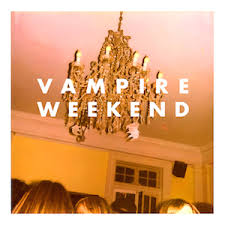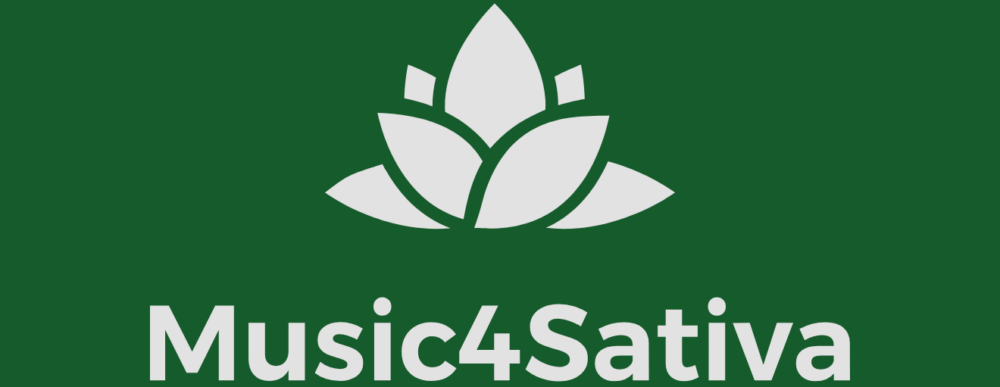1/17/21

Well, now this has happened. Turns out, Vampire Weekend is one of my favorite bands of all time. With their appearance on this 2008 list, all four of their studio albums have made my top ten lists (’08, ’10, ’13, ’19). I knew I liked VW, but I never would have guessed when I started this project that their entire catalogue would ascend to the elite group. Really everything about them is wonderful. Ezra Koenig’s voice is perfect in every way, technically they push the limits of creativity, and pretty much every one of their songs hits the right spot. They are also one of the few bands I associate with my relocation to Los Angeles in 2009. At the time the buzz was still palpable from their self-titled debut album of the previous year, which to my ears felt like the embodiment of a new era in popular music. “A-Punk” and “I Stand Corrected” were getting a lot of airplay on the station I listened to in LA, and when I hear this album today, it takes me back to the excitement of those early days of rebuilding my life in a new town. In all, an incredible list of albums here, the most surprising for me is the Nick Cave album. Everything I’d heard from him prior to this rubbed me the wrong way. I’m glad we’ve finally connected.
Ten Best 2008
1. Vampire Weekend, Vampire Weekend
2. The Black Keys, Attack & Release
3. Juana Molina, Un Dia
4. Death Cab For Cutie, Narrow Stairs
5. Nick Cave & the Bad Seeds, Dig, Lazarus, Dig!!!
6. Jenny Lewis, Acid Tongue
7. Q-Tip, The Renaissance
8. David Byrne and Brian Eno, Everything That Happens Will Happen Today
9. TV on the Radio, Dear Science
10. Friendly Fires, Friendly Fires
1/13/21
Led Zeppelin, Physical Graffiti (1975)
One of my favorite parts of starting a new year of album reviews is re-listening to ones I’m already familiar with but, in most cases, haven’t heard in years. They are often albums I loved back in the day and listen to now with “modern” ears to make sure I still love them. Led Zeppelin’s masterpiece Physical Graffiti is one of those. There’s nothing I can say about this legendary work of rock ‘n’ roll art that will break any new ground, so I won’t even try, other than to say if you haven’t heard it, you should give a listen.
Hearing a digital version of it today, on high-quality, noise-cancelling headphones, I couldn’t help but think what it must have been like to have been a big fan of Zeppelin’s back in the day, anxiously waiting the release of this, their fifth studio album and their first DOUBLE album! I can just imagine some guy in his mid twenties, a Zep fan since high school, racing home from the record store, looking around his apartment for something to cut the cellophane off the album, something other than his thumbnail because that always ends up drawing a little bit of blood. A ballpoint pen does the trick, and after removing the plastic wrap he carefully extracts the album from the sleeve, consciously avoiding touching the shimmering silky black surface of the newly pressed vinyl. He gingerly places the record on the turntable spindle, engages the overarm to hold the record in place, presses play, retreats to his couch, then rolls a joint as the show begins through his stacked Pioneer speakers.
During the climax of the eleven-minute “In My Time of Dying,” he’s on the edge of the couch, lashing out with imaginary drumstick against invisible cymbals and snares, not exactly in time with John Bonham, but enough to get his heart pounding. When the song ends he collapses back in the couch, the room completely silent now, and he notices that the tone arm has lifted off the record and has automatically returned to its rest, which means he has to stand up, walk across the room, carefully lift the record off the spindle, flip it over, place it back on the spindle, return the overarm to its holding position, and press play again. On the way back to the couch he grabs a Michelob Light from the fridge. By the end of side two he’s he reeling with delight, “Kashmir” being the most other-worldly song he’s heard in his young life. As he scratches his head in disbelief, he again notices the record player has stopped spinning, which means he has to get up off the couch, walk across the room, remove the disc from the turntable, insert it back into its protective sleeve, remove disc two, place it on the spindle, return the overarm to hold the disc in “ready” position, press play, and again return the couch.
And you thought your life was complicated.
1/10/21

I wish I could say that, as an 11-year-old in 1974, I was sophisticated enough to be listening to Professor Longhair’s Rock n Roll Gumbo. Had I been, I would have grown up to be a much cooler teenager. Actually, this album didn’t cross my radar until nearly a decade after it’s release and five years after Henry “Roy” Byrd’s death. I’ll never forget hearing it the first time. It was New Year’s Eve 1985-86. The memory is vivid because it really did change the trajectory of my musical tastes overnight. A few friends had gathered to celebrate the turning of the calendar in Flagstaff, AZ. As we pre-gamed before hitting the bars, our host played this album at his apartment. From the opening piano run and the Profs’ crackling baritone voice, I was mesmerized. Upon returning home after our road trip, I immediately acquired a copy and to this day, it’s as infectious and exhilarating as it was that night, a mind-boggling thirty-four years ago. It’s sadly not available on Spotify and, since I no longer have compact disc technology at my disposal, I’m left with no other alternative than YouTube where, the space between each song is defiled by earsplitting commercials, something I wouldn’t tolerate even once if I knew the payoff wasn’t so damned wonderful. This album isn’t just my album of the year for 1974, it’s one of my favorites of all time. Runner-up to the Prof is Robert Palmer’s Sneakin’ Sally Through The Alley, an absolutely delightful record that I’d never heard until recently, and would’ve easily been record of the year had it not been for the Prof.
Ten Best 1974
1. Professor Longhair, Rock n Roll Gumbo
2. Robert Palmer, Sneakin’ Sally Through the Alley
3. Van Morrison, Veedon Fleece
4. Eric Clapton, 461 Ocean Boulevard
5. Joni Mitchell, Court and Spark
6. Willie Nelson, Phases and Stages
7. Tom Waits, The Heart of Saturday Night
8. John Hiatt, Hangin’ Around the Observatory
9. Jimmy Buffett, Living and Dying in ¾ Time
10. Eagles, On the Border
Note: I’m acutely aware of how caucasian this list (and many others) appears. It’s embarrassing really, and forced me to wonder why, because diversity is so important to me. All I can say is I’m a product of my upbringing. I was raised in the Seventies in an all-white neighborhood. There were no kids of color in my elementary school and only a couple at my high school. My parents listened to white musicians, dad idolized Glen Campbell and Willie Nelson while mom’s musical catalogue wasn’t much deeper than Neil Diamond. I wish they had been paying Charlie Parker or Billie Holiday or Al Green while I was in their care and impressionable, but they weren’t. I didn’t know anything beyond FM pop-rock radio until I went off to college. For what it’s worth my eleventh and twelfth pick for this list are albums by James Brown and Aretha Franklin. So, I couldn’t bump even one of the other nine records to make room for James or Aretha, so the list didn’t appear so vanilla? Not even Jimmy Buffett, for godsake? Well, I guess, that’s what it comes down to, if I’m being true to my musical instinct. All I know is the whiteness of this list does not reflect the commitment to equality that I know to be in my heart today. I try hard to keep politics out of this blog, but my final thought on the subject is simply to say #BlackLivesMatter.
1/8/21
Sigur Rós, Með suð í eyrum við spilum endalaust (2008)
Man, this is some heavy emotional lifting. By the end of it I was drained, despite having no idea what was being said, since nearly all of it is sung in Icelandic. The first four songs start off bouncy and sweet enough (I won’t even attempt to type the names of these songs because the words won’t mean anything to — I’ll go out on a limb and say — everybody who’s reading this). The fifth cut, “Festival” (one of two titles in English yet sung in Icelandic) is an epic journey, incredibly moving and intense at the beginning, maybe sad, perhaps happy, it’s hard to say. The nine-minute song featuring crystal clear vocals is split in two, with the second half lifting the listener out of the emotional well and into something more cheerful. The last minute is so explosive and over the top, in sharp contrast to what came before, I couldn’t help but chuckle at the dichotomy. Curiosity got the best of me, so I translated the lyrics, which packed a much better punch when I didn’t understand what was being said: “Let’s take a look/The sea cuts off/We sail the mast of faith/Let’s breathe/We steer to the bridge/We’re sailing ashore/In boulders and sand/We land.” Then I listened to Sigur Rós’s next album from 2012 and the first two songs feel like the pit of depression, too. I can’t help but wonder if the bleakness comes from living in Iceland, which I’m sure is lovely, but must feel dreary and isolating at times.
